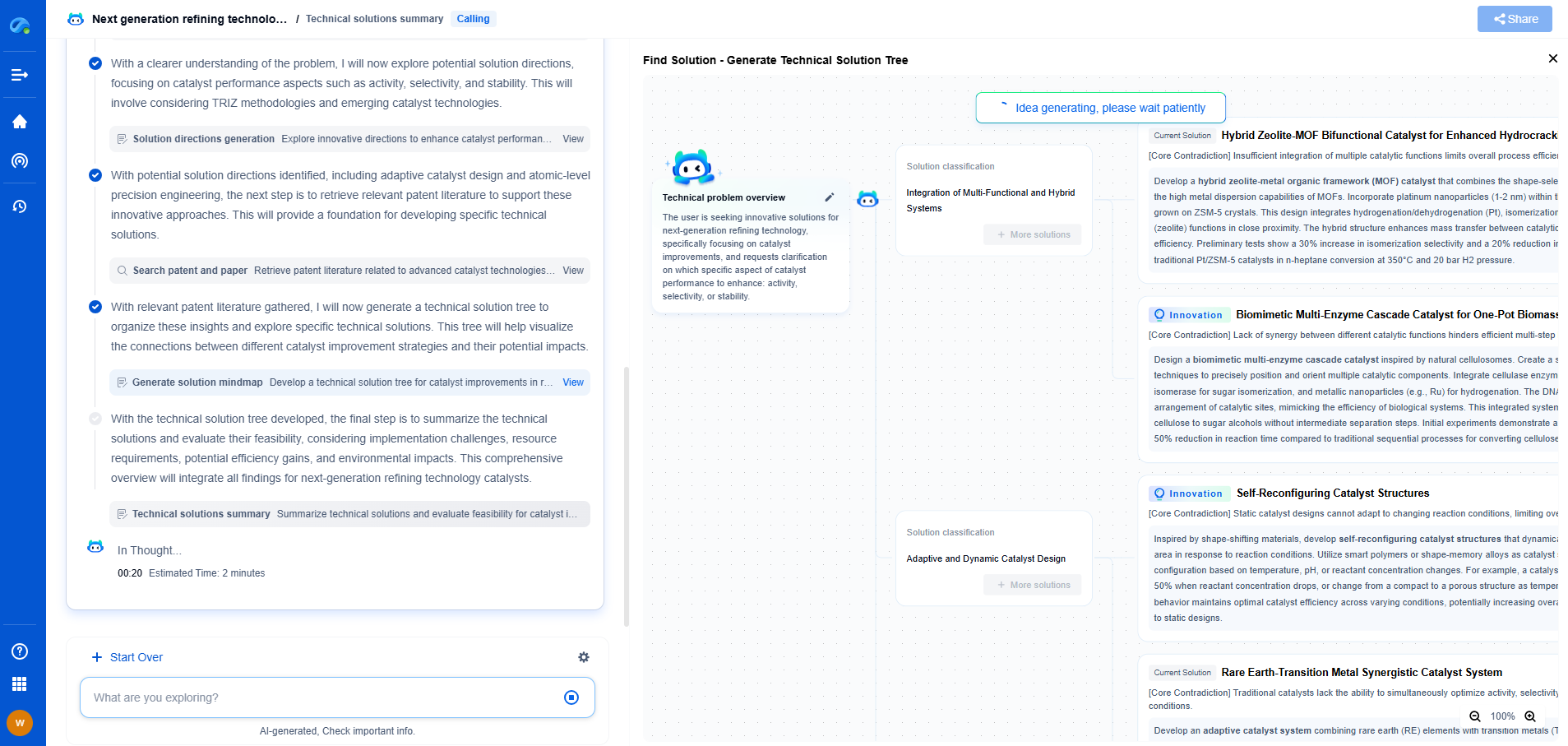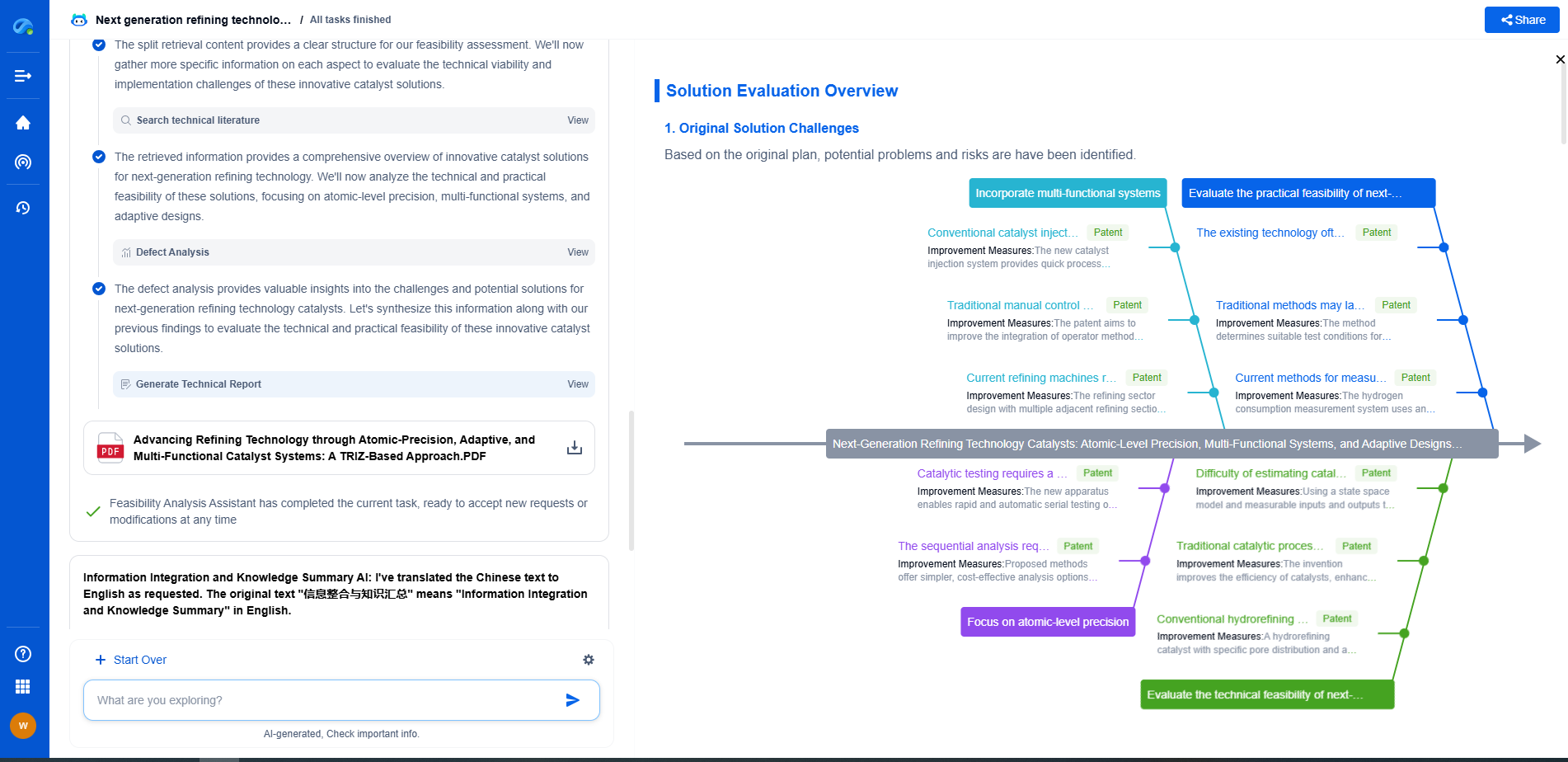How to Design for Compliance with 3GPP RF Requirements
JUN 27, 2025 |
The Third Generation Partnership Project (3GPP) sets the standard for radio frequency (RF) requirements in mobile telecommunications. For engineers and designers aiming to create products that comply with these standards, a comprehensive understanding of 3GPP RF requirements is essential. These regulations are designed to ensure that devices operate efficiently and do not interfere with other devices or networks.
Overview of Key 3GPP RF Specifications
3GPP requirements cover a wide range of specifications, including output power, spurious emissions, and frequency stability. Each of these aspects plays a critical role in ensuring that devices operate within the designated frequency bands without causing unwanted interference. Designers must familiarize themselves with these specifications and integrate them into the early stages of product development to guarantee compliance.
Planning Your Design for Compliance
The first step in designing for compliance is careful planning. This involves understanding the specific requirements for the target frequency band and technology standard, whether it be LTE, 5G NR, or others. Designing with these requirements in mind from the outset can prevent costly redesigns and testing failures down the line.
Early-stage simulation and modeling can be highly beneficial. By using RF simulation tools, engineers can predict how their design will perform under various conditions and adjust parameters to meet 3GPP standards. This proactive approach helps in identifying potential issues and addressing them before moving to the prototype stage.
Component Selection and Circuit Design
Selecting the right components is crucial for meeting 3GPP RF requirements. Components such as filters, amplifiers, and oscillators must be carefully chosen to ensure that they can handle the necessary frequencies and power levels. The use of high-quality, well-matched components can significantly influence the performance of the final product.
Circuit design also plays a vital role in compliance. Designers should focus on optimizing the signal path and minimizing losses. Techniques such as impedance matching and proper grounding can enhance performance and help in meeting the stringent emission and power requirements set by 3GPP.
Testing and Validation
Testing is a critical part of the design process. Once a prototype has been built, it must be rigorously tested to ensure compliance with 3GPP standards. This involves both conducted and radiated tests to measure parameters like power output, spurious emissions, and frequency stability.
Investing in proper testing equipment and facilities, or partnering with certified testing labs, can streamline the validation process. It is essential to simulate real-world operating conditions during testing to ensure that the device will perform as expected in the field.
Iterative Design Process
Designing for compliance is often an iterative process. Initial tests may reveal areas where the design falls short of 3GPP requirements. In such cases, designers must be prepared to revisit the design, making necessary adjustments and improvements.
This iterative approach not only leads to a compliant product but also often results in better overall performance and reliability. Embracing a flexible design and testing process allows for innovation and improvement while still adhering to necessary standards.
Documentation and Certification
Once a design has successfully passed testing and validation, comprehensive documentation is essential. Detailed records of design specifications, test results, and any modifications made during the design process are crucial for obtaining necessary certifications. This documentation acts as proof of compliance and can be invaluable during audits or future product updates.
Securing certification from relevant authorities is the final step in the compliance process. This not only legitimizes the product for market release but also assures customers and partners of the product's quality and reliability.
Staying Updated with Evolving Standards
3GPP standards are dynamic, evolving with advances in technology and industry needs. Keeping up-to-date with the latest requirements is crucial for ongoing compliance and innovation. Engaging with industry forums, attending relevant conferences, and participating in 3GPP working groups are excellent ways to stay informed.
In conclusion, designing for compliance with 3GPP RF requirements involves careful planning, thoughtful component selection, rigorous testing, and thorough documentation. By integrating these practices into the design process, engineers can create devices that not only meet current standards but are also poised for future advancements in telecommunications technology.
Unlock Next-Gen Innovation in Communication Technology with Patsnap Eureka
The field of communication technology is evolving at breakneck speed—from 5G and satellite systems to next-gen wireless protocols and quantum communications. Staying ahead demands more than just information—it requires strategic insights, real-time patent intelligence, and a deep understanding of technological trajectories.
Patsnap Eureka, our intelligent AI assistant built for R&D professionals in high-tech sectors, empowers you with real-time expert-level analysis, technology roadmap exploration, and strategic mapping of core patents—all within a seamless, user-friendly interface. Whether you're optimizing signal processing designs, navigating 3GPP standards, or exploring IP strategies for IoT and 6G networks, Eureka helps you move faster, think deeper, and innovate smarter.
Try Patsnap Eureka today—and see how it can transform the way you work across the entire communication technology innovation lifecycle.
- R&D
- Intellectual Property
- Life Sciences
- Materials
- Tech Scout
- Unparalleled Data Quality
- Higher Quality Content
- 60% Fewer Hallucinations
Browse by: Latest US Patents, China's latest patents, Technical Efficacy Thesaurus, Application Domain, Technology Topic, Popular Technical Reports.
© 2025 PatSnap. All rights reserved.Legal|Privacy policy|Modern Slavery Act Transparency Statement|Sitemap|About US| Contact US: help@patsnap.com

